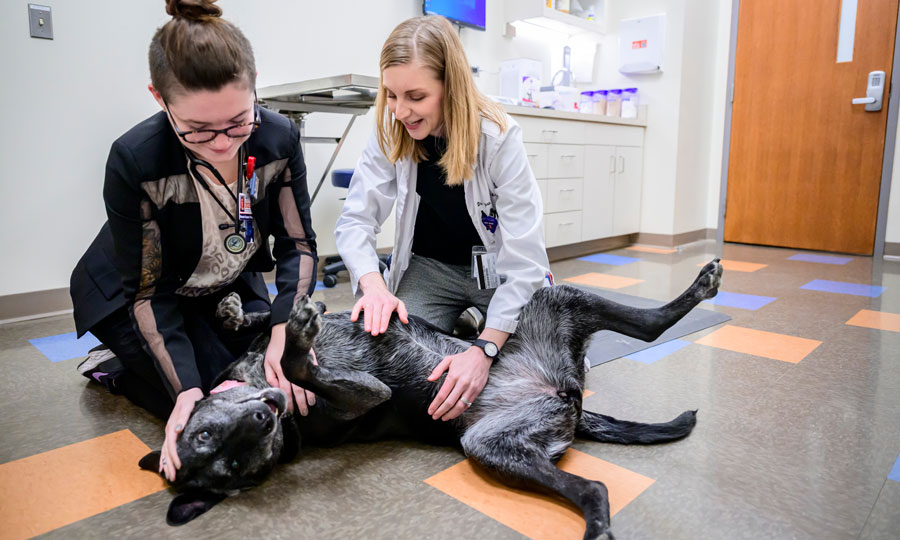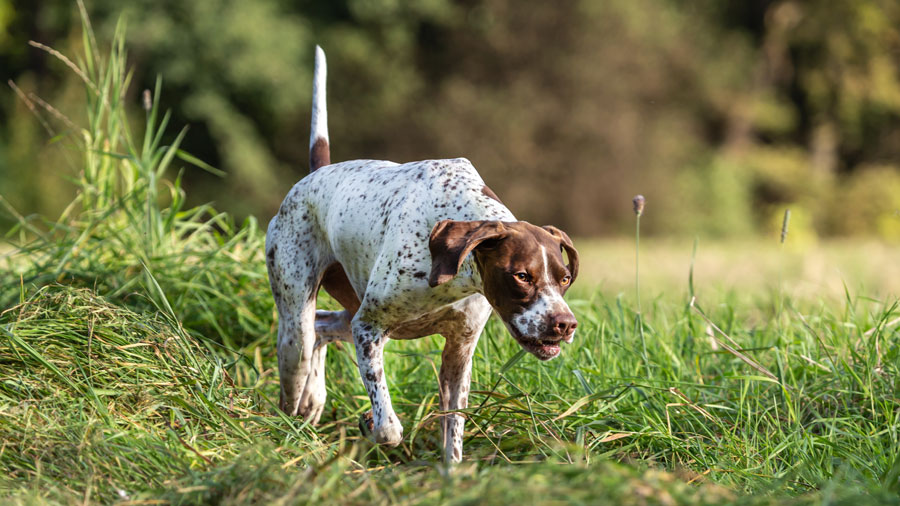Illinois Anesthesia Team Helps Exotic Felines
Think your cat is uncooperative during a veterinary examination? Image if your cat weighed more than 400 pounds and had three-inch-long teeth and claws!
Unsurprisingly, lions, tigers, and other wild cats must be anesthetized before they can be examined closely by a veterinarian. When it’s time for dental care for the residents of the Exotic Feline Rescue Center in Center Point, Ind., anesthesia is provided by Dr. Stephanie Keating, a board-certified anesthesiologist at the University of Illinois Veterinary Teaching Hospital in Urbana, and a team of experienced veterinary technicians, anesthesia residents, and veterinary students.
![[Exotic Feline Rescue Center]](https://vetmed.illinois.edu/wp-content/uploads/2021/04/pc-keating-exotics-arrive.jpg)
A Decade of Anesthesia Aid
Twice a year a team of veterinary volunteers from a variety of organizations visits the rescue center to perform necessary dental procedures. The team may examine as many as 10 cats in one weekend visit. Personnel from the University of Illinois team have been delivering gas anesthesia during these procedures for over 10 years. Veterinary technicians Jessica Risley and Justin Lancaster have been on the anesthesia team for most of that time.
“Not every cat will need anesthesia at each visit. The staff at the rescue center keep a close eye on the animals and determine which cats need to be evaluated or have a procedure performed based on changes in their eating pattern or observable dental problems,” Dr. Keating explains. The rescue center has a staff veterinarian who routinely manages the animals’ health and who sedates the cats for other procedures.
How to Anesthetize a Tiger
The anesthetic process for these big cats begins differently from the process for domestic cats. The veterinarian typically uses either a dart gun or a pole syringe to deliver the initial medication in order to remain far away from the cat. The dart from the dart gun releases anesthesia medications on impact with the animal. As the name suggests, a pole syringe is a long pole with a syringe at the end that contains anesthesia medication.
“Once the cat is successfully anesthetized by the injection, the rescue center staff and anesthesia personnel move into the animal’s enclosure and load it onto a vehicle for transportation to the on-site clinic,” Dr. Keating says. This process requires several people.
At the on-site clinic, the cats will have an endotracheal tube placed to deliver a form of gas anesthesia to keep the animals asleep during the examination and treatment.
(By the way, the diameter of an endotracheal tube for a domestic housecat is typically 4.5 mm (less than 1/6 of an inch); for an adult human, it’s about 8 mm; for a lion, it’s more than 20 mm!)
Anesthesia Monitoring and Recovery
While the cat is under anesthesia, it is constantly monitored.
“We monitor the cat’s heart rate, blood pressure, respiratory rate and efficacy, and anesthetic depth,” Dr. Keating explains. These values are recorded every 5 minutes but monitored continuously. Arterial blood samples are also obtained to evaluate blood gases and electrolytes during anesthesia. The team is looking for any significant change and is prepared to deal with it.
The big cats will be under anesthesia for typically no more than four hours for a procedure, with the average time being approximately two hours.
“When the exam or procedure is finished, the cat will be moved back into its enclosure to recover. When the cat is sufficiently recovered and positioned safely in the enclosure, we remove the endotracheal tube and continue to monitor them from outside the enclosure,” Dr. Keating says. The animal will be a little groggy but will become ambulatory again after a few hours.
If you have questions about anesthesia for animals big to small, contact your local veterinarian.
By Beth Mueller
Photos by Dr. Ashley Mitek

![[Dr. Stephanie Keating intubates a tiger]](https://vetmed.illinois.edu/wp-content/uploads/2021/04/pc-keating-exotics.jpg)


